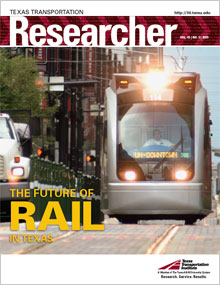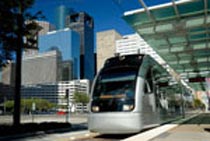When Houston’s light-rail transit system, METRORail, opened on January 1, 2004, the city welcomed its first on-street rail system in 64 years. The system opened to great excitement. However, concern accompanied the excitement with an unexpectedly high rate of motor vehicle collisions with METRORail vehicles during the first month of rail service. This led to METRORail requesting the assistance of the Texas Transportation Institute (TTI) for an analysis of the rail line’s traffic safety.
A research team from TTI and the light-rail industry examined data on METRORail’s design and operations, the collisions and similar experiences of other light-rail systems. The work was initiated in early February 2004 and included a review of collisions through that time. The research team also interviewed key staff and observed the conditions along the rail right-of-way, particularly at locations where rail vehicles and motor vehicles interface.
“The most common type of collisions that occurred between motor vehicles and METRORail vehicles through the first month involved illegal left-hand turns by motorists,” says TTI Senior Research Engineer Brian Bochner. “Despite traffic signs and signals designed to control the location and timing of left-turn movements along the rail line, several motorists turned into or in front of oncoming light rail vehicles, sometimes turning from an incorrect lane. All collisions examined appeared to have been due to improper or illegal turns or other driver errors.”
While the existing safety provisions of the design were found to be generally adequate, the research team recommended some minor adjustments to the traffic control devices and found that operational practices were needed to fine tune the system and its operation to work as intended. This included such aspects as traffic control system adjustments for current operating speeds and adjustment of signing.
A number of the recommended improvements were implemented almost immediately and others followed. Since the implementation of these safety improvements, the crash rates went down from 34 in the first six months of 2004 to only 13 collisions in the last six months of 2004.

